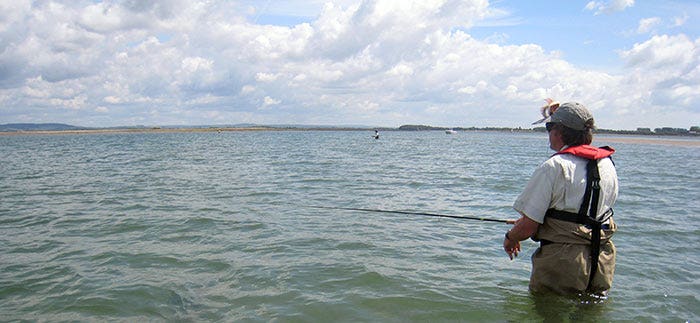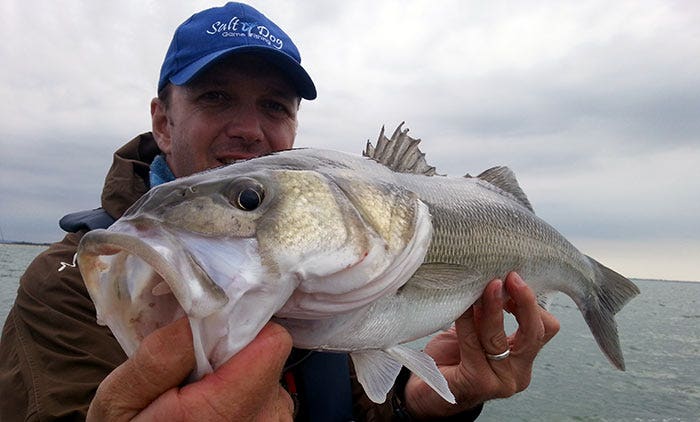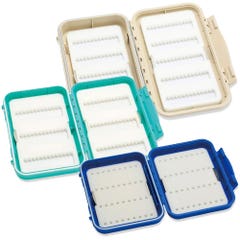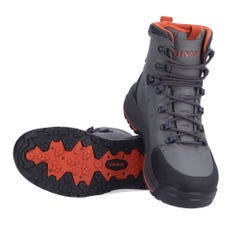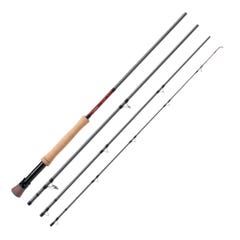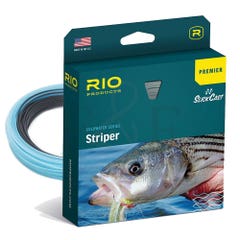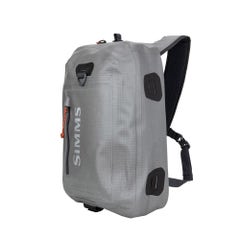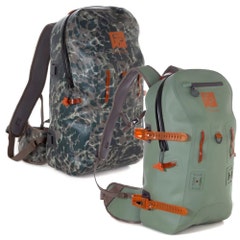If you want to get to grips with them then check out Jonathan Tomlinson’s top tips and tactics…
Do Your Homework A good knowledge of local tide times and weather is essential when you plan your trip to ensure you are fishing both safely and effectively. A number of excellent websites and apps are available to ensure you have access to all of the information you require to plan ahead, the BBC Weather and Tide Tables site is excellent, as is the comprehensive Tide Times.
Bass are often the first species to push in at the start of a flood tide chasing sandeels and crabs, so check your timings and be there waiting for them! Big tides tend to be better than neap tides and remember the fish will move with the tides – so make sure you do too, don’t be a static angler!
VIDEO: Join Sportfish fly fishing expert JT and his friend PJ out on the harbour waves as they offer up their top tips and advice for catching bass on the fly in our latest video guide!
Safety First The sea can be a hostile environment and one which can change from placid to violent in literally minutes so keep safe. A lifejacket is essential whether you are boat or shore fishing and make sure you have the appropriate footwear for your location, be it on deck, rocks or wading the shoreline.
Try to fish with a friend at all times and pop your phone and essential items such as keys, wallet etc. in a protective waterproof case.
Location If you are shore fishing get yourself an OS map of your chosen area and study it well. Key areas to fish include sandbanks, deep water rock marks, rips in the current, anywhere with a strong tidal push, kelp and snags.
Keep your eyes open too feeding gulls will betray the presence of bait fish shoals and rocky pools filled with crab shells will be bass magnets once the tide begins to flood.
Don’t write off any area, bass are present around all of our shoreline and don't be fooled into thinking it's all about dawn or dusk fishing either - bass will hit a fly or lure at any time of day or night!
Join BASS The Bass Anglers’ Sportfishing Society (BASS) is a fishing club and an organisation dedicated to the conservation of the European sea bass and it believes that its members have the ability to encourage the conservation, research and protection of the European sea bass as well as to improve and educate others in the techniques of angling for a premier sporting fish. They produce a quarterly magazine, which is free to members and arrange social events and fish-ins. If you fish for bass you really should consider joining!
Be Legal and Respectful Treat any bass you catch with the utmost respect and return them alive. There is currently a legal requirement to return all bass caught immediately, whether you are fishing from the shore or from a boat - updated June 2018.
Get in Close Bass, including the very biggest fish, are often caught very close in as they move in on the flooding tide to hit into prey fish shoals and crunch on crabs in newly-flooded pools and gullies. Don’t ignore the water right under your feet, even if it is shallow, and work your fly or lure right into the margins.
Remember to minimise disturbance when you are wading calm, shallow water too – the fish could almost literally be right around your feet. Wherever you fish keep it light and mobile.
Retrieve Rates Always vary your retrieve rate, a fast and erratic method mimics a sandeel far better than a slow and steady retrieve and will usually provoke a better response. Hits from small schoolies are often difficult to convert but with bigger fish you will often get an initial ‘knock’ before the hit.
If you are not catching, and think you should be, change your fly, try working a different depth or vary your retrieve – don’t forget bass will hit surface-fished poppers as well as sandeel imitations and Clousers.
Finally… Remember that the current shore caught record bass is 19lb 11oz 12dr - that is one huge fish and, despite the concern for the long-term future of the species, there are still monsters out there waiting to be caught, often in the most unlikely of areas.
And, if you want a head start to your bass fishing, don't forget we run courses out of Chichester Harbour throughout the summer with dates still available throughout August. View our bass fishing days page for further information and booking.
[vc_button title="Shop Sportfish Expert JT's Top Bass Fishing Tackle Online »" target="_self" color="default" size="size_large" href="http://www.sportfish.co.uk/fly-fishing-tackle/top-bass-tackle.html"]
One of the most iconic of our sea species the European sea bass is a true sport fish in every sense of the word and during the summer months, as they migrate northwards and inshore, they are a brilliant target for the saltwater fly or lure angler.
JT's Top Bass Fishing Guide
If you want to get to grips with bass, then check out Jonathan Tomlinson’s top tips and tactics…
Do Your Homework
A good knowledge of local tide times and weather is essential when you plan your trip to ensure you are fishing both safely and effectively. A number of excellent websites and apps are available to ensure you have access to all of the information you require to plan ahead, the BBC Weather and Tide Tables site is excellent, as is the comprehensive Tide Times.
Bass are often the first species to push in at the start of a flood tide chasing sandeels and crabs, so check your timings and be there waiting for them! Big tides tend to be better than neap tides and remember the fish will move with the tides – so make sure you do too, don’t be a static angler!
VIDEO: Join Sportfish fly fishing expert JT and his friend PJ out on the harbour waves as they offer up their top tips and advice for catching bass on the fly in our latest video guide!
Bass Fishing Safety
The sea can be a hostile environment and one which can change from placid to violent in literally minutes so keep safe. A lifejacket is essential whether you are boat or shore fishing and make sure you have the appropriate footwear for your location, be it on deck, rocks or wading the shoreline.
Try to fish with a friend at all times and pop your phone and essential items such as keys, wallet etc. in a protective waterproof case.
Bass Fishing Location
If you are shore fishing get yourself an OS map of your chosen area and study it well. Key areas to fish include sandbanks, deep water rock marks, rips in the current, anywhere with a strong tidal push, kelp and snags.
Keep your eyes open too feeding gulls will betray the presence of bait fish shoals and rocky pools filled with crab shells will be bass magnets once the tide begins to flood.
Don’t write off any area, bass are present around all of our shoreline and don't be fooled into thinking it's all about dawn or dusk fishing either - bass will hit a fly or lure at any time of day or night!


Join BASS
The Bass Anglers’ Sportfishing Society (BASS) is a fishing club and an organisation dedicated to the conservation of the European sea bass and it believes that its members have the ability to encourage the conservation, research and protection of the European sea bass as well as to improve and educate others in the techniques of angling for a premier sporting fish. They produce a quarterly magazine, which is free to members and arrange social events and fish-ins. If you fish for bass you really should consider joining!
Be Legal and Respectful
Treat any bass you catch with the utmost respect and return them alive, if you do plan to take some, you must follow the recreational bass fishing guides:
1 March to 31 December 2023, no more than two seabass may be retained per fisherman per day. In recreational fisheries in ICES divisions 8a and 8b, a maximum of two seabass may be retained per recreational fisherman per day throughout the year.
The minimum size of European seabass is 42 cm. All specimens below this size must be released.
No bass can be taken by fixed or drift nets.
These rules apply if you are fishing from a boat or from the shore.
Get in Close
Bass, including the very biggest fish, are often caught very close in as they move in on the flooding tide to hit into prey fish shoals and crunch on crabs in newly-flooded pools and gullies. Don’t ignore the water right under your feet, even if it is shallow, and work your fly or lure right into the margins.
Remember to minimise disturbance when you are wading calm, shallow water too – the fish could almost literally be right around your feet. Wherever you fish keep it light and mobile.
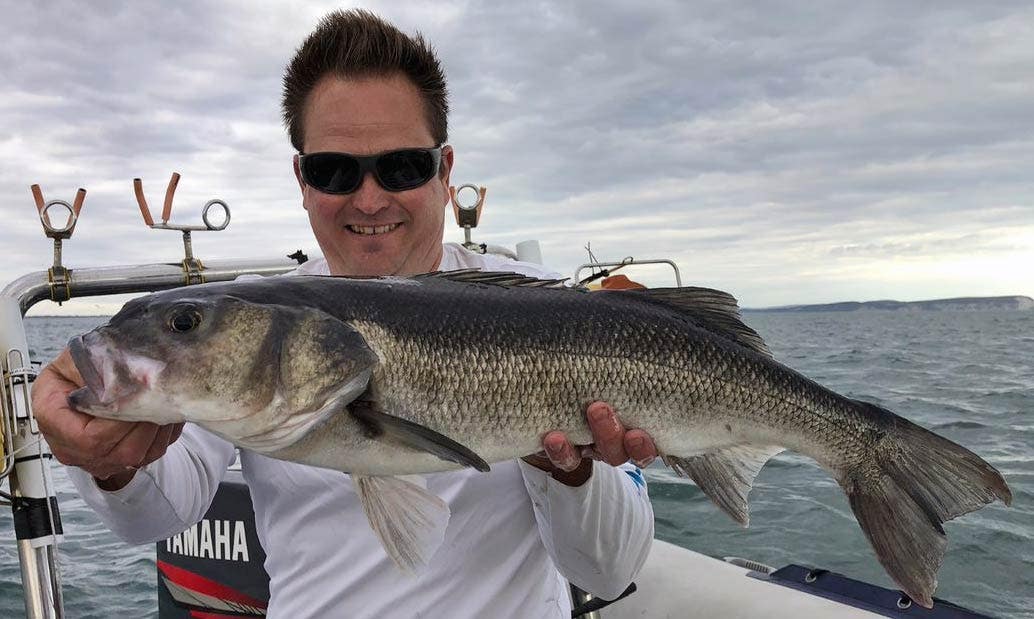

Retrieve Rates
Always vary your retrieve rate, a fast and erratic method mimics a sandeel far better than a slow and steady retrieve and will usually provoke a better response. Hits from small schoolies are often difficult to convert but with bigger fish you will often get an initial ‘knock’ before the hit.
If you are not catching, and think you should be, change your fly, try working a different depth or vary your retrieve – don’t forget bass will hit surface-fished poppers as well as sandeel imitations and Clousers.
Finally… Remember that the current shore caught record bass is 19lb 11oz 12dr - that is one huge fish and, despite the concern for the long-term future of the species, there are still monsters out there waiting to be caught, often in the most unlikely of areas.
And, if you want a head start to your bass fishing, don't forget check out our friends at Salty Dog Game Fishing who run courses out of Chichester Harbour throughout the summer with dates still available throughout August.


